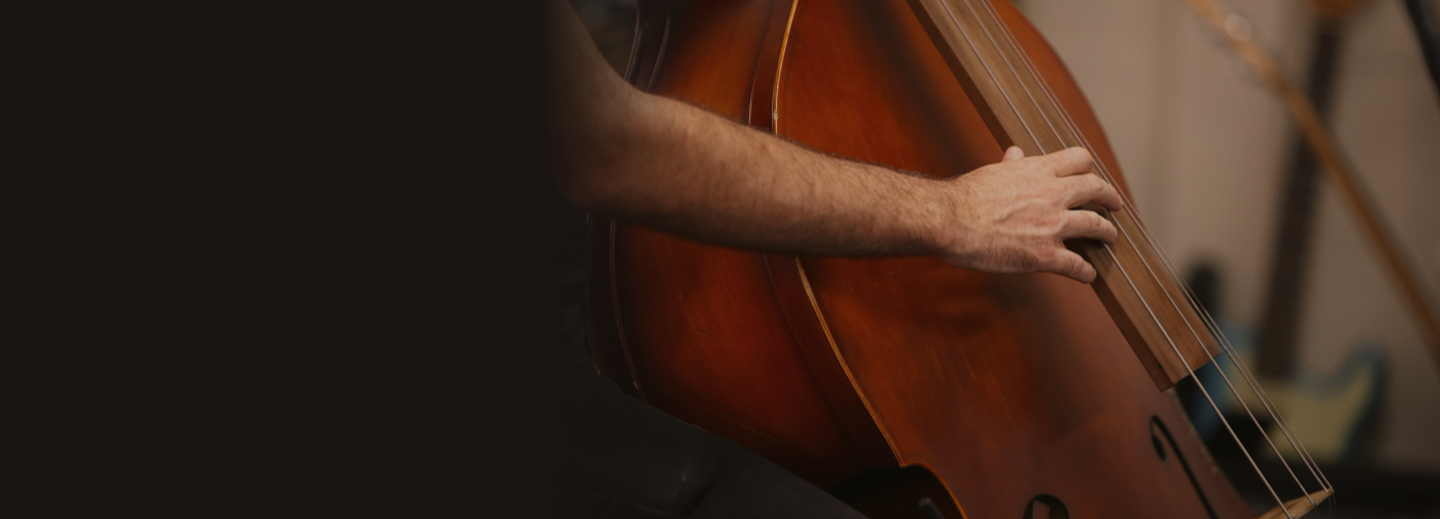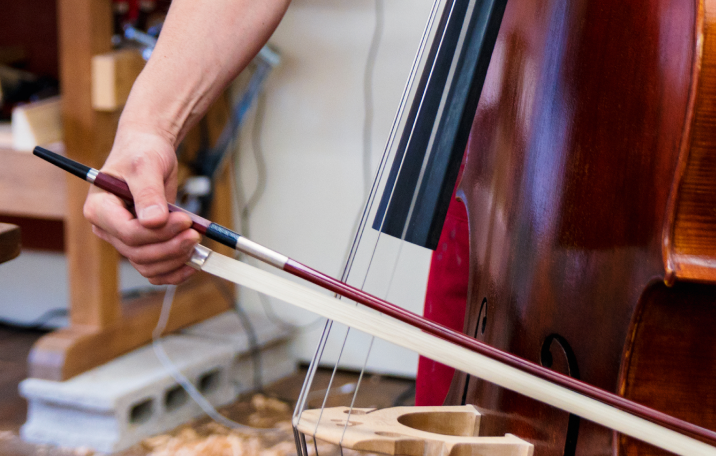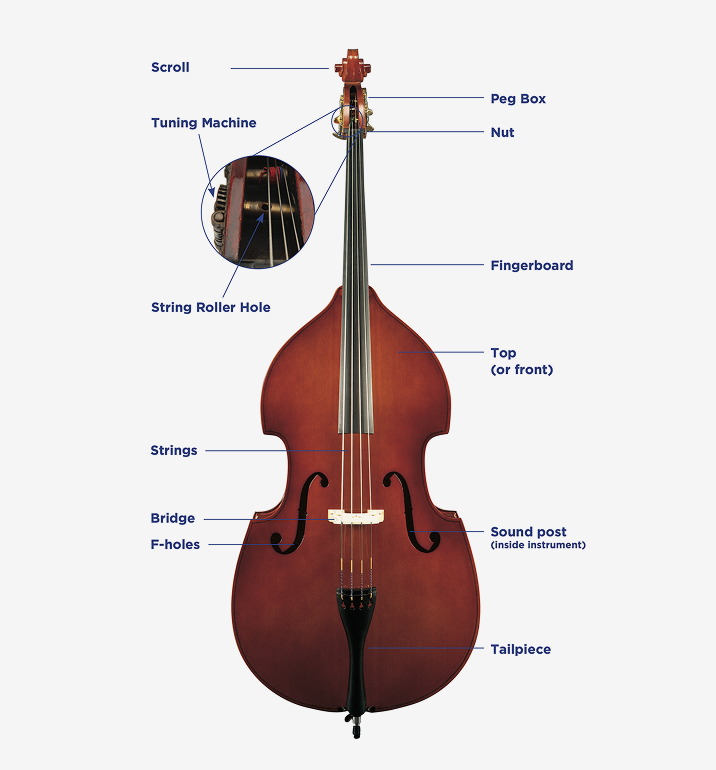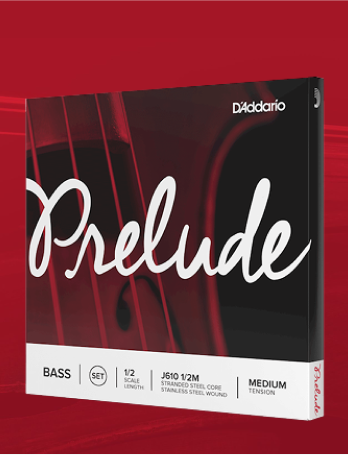

Double Bass Survival Guide
Whether you’re just starting out or refining your skills, this Double Bass Survival Guide is here to help you understand everything from everyday instrument care to string selection, tuning, and more.
Caring for Your Instrument & Bow
Instrument Care:
- Always store and use your instrument at room temperature.
- When in its case, use a humidifier or the Humidipak Two-Way Humidification System to prevent damage from humidity changes.
- After each playing session, wipe away rosin residue from the strings and body of the instrument with a soft cloth such as the D’Addario Orchestral Micro-Fiber Polishing Cloth.
- When not in use, store the bass on a proper instrument stand, securely lean it facing forward against a corner, or lay it on its side, preferably in its case. Avoid laying the bass on its back.
- Replace strings regularly to ensure the best tone and response.
- Refer all repairs to a qualified technician or luthier.
Bow Care & Rosin:
- Never touch bow hair directly with your fingers.
- Tighten the bow hair using the screw at the frog before playing, but avoid overtightening. Your bow should maintain its natural curve.
- Always loosen the bow hair after playing and for storage to prevent warping and loss of bow hair.
- Do not strike the bow against surfaces.
- Do not store the bow in the instrument’s F-holes. Instead, store it in a proper case or use a bow quiver.
- Replace bow hair about once a year.
- Apply rosin evenly across the full length of the bow hair, using 6-8 long strokes in one direction from frog to tip.
- Store rosin in an upright position in a cool, dry place (avoid temperatures above 100°F)

Installing & Tuning Your Strings
Preparation
- Gather replacement strings, a pencil, and a tuner. A string winder can help speed the process.
- Ensure the bridge is straight and doesn’t lean during string changes.
Removing Old Strings
- Replace one string at a time to keep the bridge in place.
- Lay the bass on its back.
- Loosen the string by turning the tuning machine clockwise, then remove it through the tailpiece.
Installing New Strings
1. Mark string grooves in the bridge and nut with graphite (pencil lead).
2. Thread the ball-end of the string through the tailpiece.
3. Insert the other end into the peg hole, threading 3” of string through.
4. Wrap the string around the peg segment on the opposite side.
5. Turn the peg counterclockwise to tighten, making sure the string crosses itself for a secure grip.
6. Tune slowly to pitch, avoiding overtightening by more than one whole step. Repeat for all strings.
Pro Tip: Your strings will naturally degrade over time due to use and corrosion. Don’t settle for old, worn-out strings. Replace them regularly rather than waiting for them to break.
Parts of the Double Bass

Selecting the Proper Strings

Prelude Strings
Ideal for beginners and students. Clear, warm tone with excellent playability. Economical option suitable for all players.

Helicore Strings
Multi-stranded steel core for stability and quick break-in. Warm, clear tone with fast response. Available in Orchestral, Pizzicato, Hybrid, and Solo versions.

Zyex Strings
Synthetic core material for rich, dense tone. Strong pitch stability and fast break-in. Close to gut in tonal character.

Kaplan Strings
Premium strings for discerning professionals. Rich tone with clarity, warmth, and projection. Excellent across registers with easy control and nuanced expression. Available in Orchestral and Solo versions.